Last Updated: 28/05/2025
How To Dogify Your Apartment
Looking for a dog but live in an apartment? Check out how to make it dog-friendly with long lasting toys and treats dog toilets exercise and more.
Author: Dr Carla Paszkowski BVSc (Hons)
Reading Time: 25 minutes - medium read
Living happily with a dog in a small home is totally achievable! You can easily make your house or apartment a dog's paradise and help your furry friend become a fantastic apartment dweller.
Thinking about a few key things sets you up for success. For instance, will your dog need an indoor potty spot? How much exercise and training will keep them happy and well-behaved? And what's the plan for managing any barking?
Keep in mind that breed and size play a role, too! If you're in an apartment and dreaming of a dog, you might be curious about the best breeds for smaller spaces. While small breeds often come to mind, some surprisingly large dogs, like the famously laid-back greyhound, can thrive in apartment life. You can learn more in our article, What are the Best Dog Breeds for Apartment Living?
Ready to create a harmonious home? Follow these tips to dog-ify your apartment (and help your dog embrace apartment living!).
Create a Pet Toilet
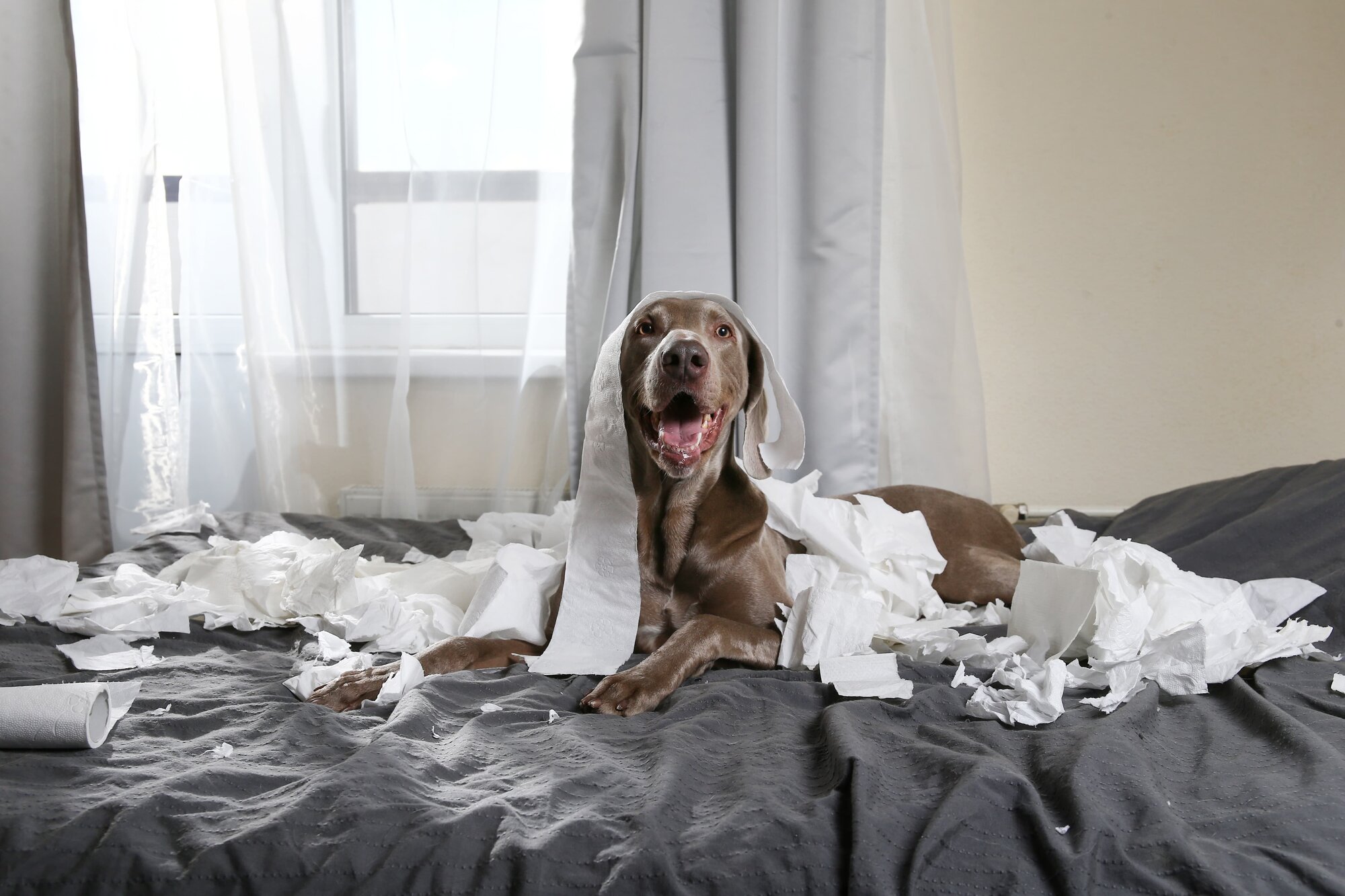
One of the first things people worry about when moving to an apartment is how to manage their dog's toileting without a backyard.
While some apartment dwellers are lucky enough to have a small courtyard or garden, many will have to make do with a small balcony, or perhaps even no outdoor area.
Taking your dog out to the street is not always possible two to three times per day, so an in-home toileting system is good to have in place.
You may wish to build yourself a sandpit or vegie patch-style garden with bark chips or a small amount of turf. However, while effective, they can be very messy and will begin to smell if not cleaned and changed out weekly or fortnightly.
There are pet toilet products available now which allow for minimal mess - these usually involve fake turf situated over a tray where you can place an absorbable pad or pee pod. This allows dogs to toilet in a captured device, similar to cats with a litter tray. These devices can be placed on a balcony or even indoors (if you can replace the turf regularly).
How to train my dog to use a pet loo? Toilet training your dog to use a pet toilet is not as hard as it sounds, and works in the same way as toilet training a puppy. The key is to place your dog on the pet toilet when they would most usually need to go - such as after sleeping, eating or playing. Reward them with lots of praise and treats when they use the pet toilet, and they'll soon recognise it as the place to 'go'!
Training to Minimise Barking
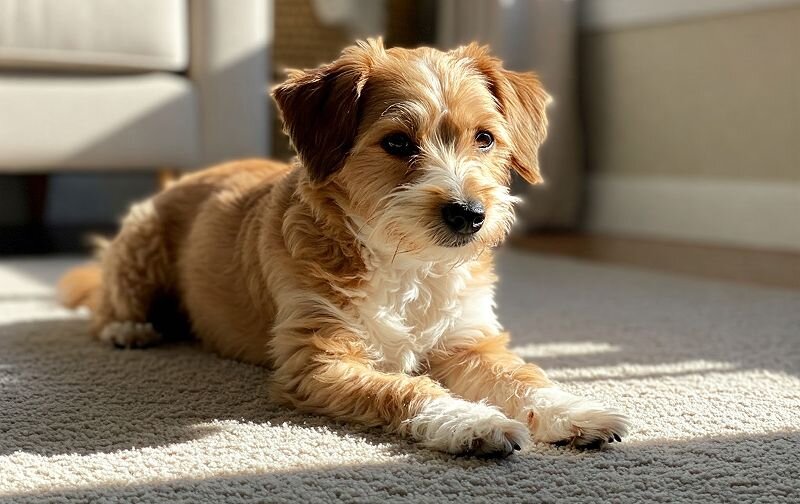
Good training is always the key to a happy, quiet pet.
It's essential to have your dog's barking under control, especially if you live in an apartment building. The last thing anyone wants is a noise complaint from your neighbours. There are a number of ways to train your dog not to bark.
Dogs often bark because of an underlying issue such as anxiety; so it is important to address any underlying issues first, and only rely on anti-bark devices as an aid to proper training if necessary under the recommendation of a Veterinary Behaviourist.
Check out our training tips in How to Stop Your Dog Barking.
Regular Exercise is Essential
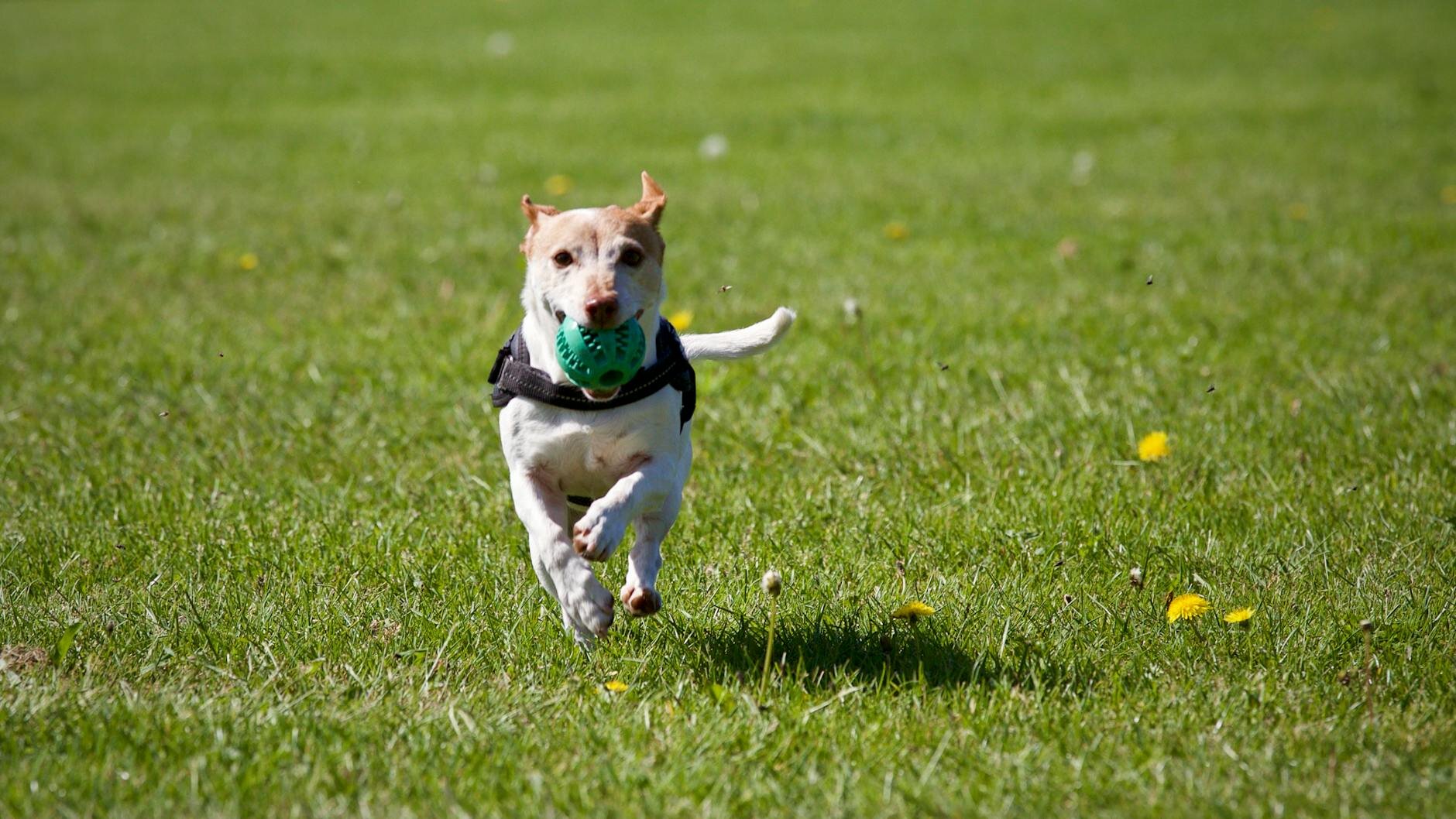
It might seem obvious, but the value of regular exercise can never be understated. Daily leash walking helps increase fitness, decrease behavioural issues, and ultimately leads to an easier to manage, happier, healthier pooch. This is important for every dog, but particularly crucial for dogs living indoors without much room to run around.
Getting into a routine is important when committing to a walking regime with your pet. Try to make it part of your getting-ready-for-work, or winding-down-after-work schedule. Plan out a long route in your neighbourhood, as well as a short route for when you're pushed for time. You might like to research where the local dog parks are, and check out some Fun Places for a Weekend Doggy Date.
When exercising your dog, it's important to keep them hydrated. Why not take a travel bowl on your walk?
For high-energy dogs it can help to give them extra exercise with a game of fetch, to expend their energy before they are back at the apartment.
Keep them Entertained
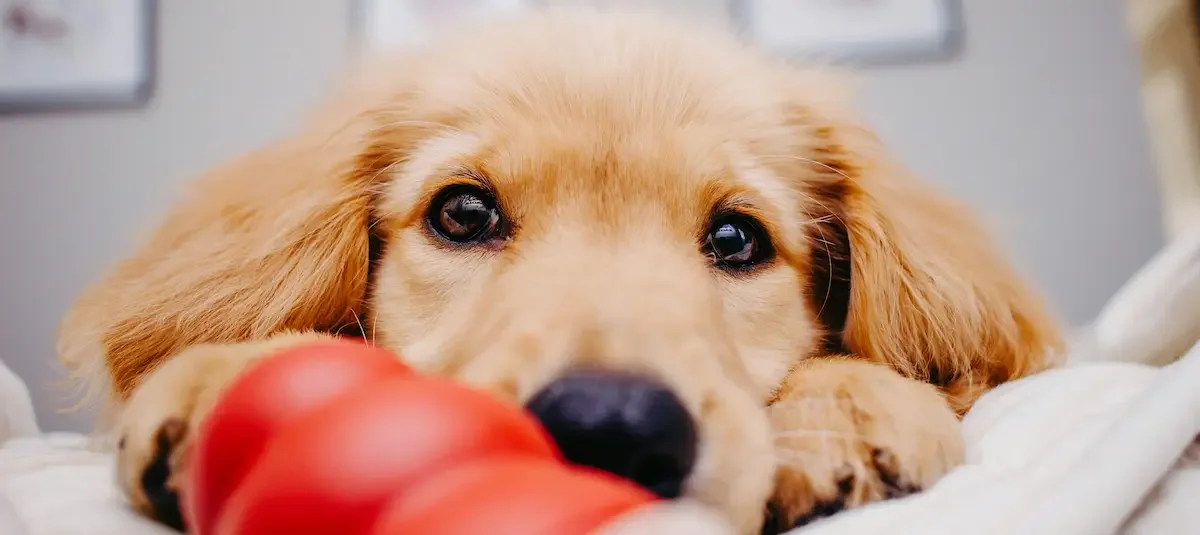
Providing lots of toys in your home can help keep your dog stimulated and happy in a small space. This is particularly important if you're working from home and need to keep your dog out of your hair.
If you want to keep your dog occupied, it can be helpful to buy interactive toys such as treat-hiding toys, or a hide-and-seek reward toy, to keep your dog occupied and out of trouble.
Want to know more? Read about The Best Boredom Buster Toys for Dogs.
Grooming
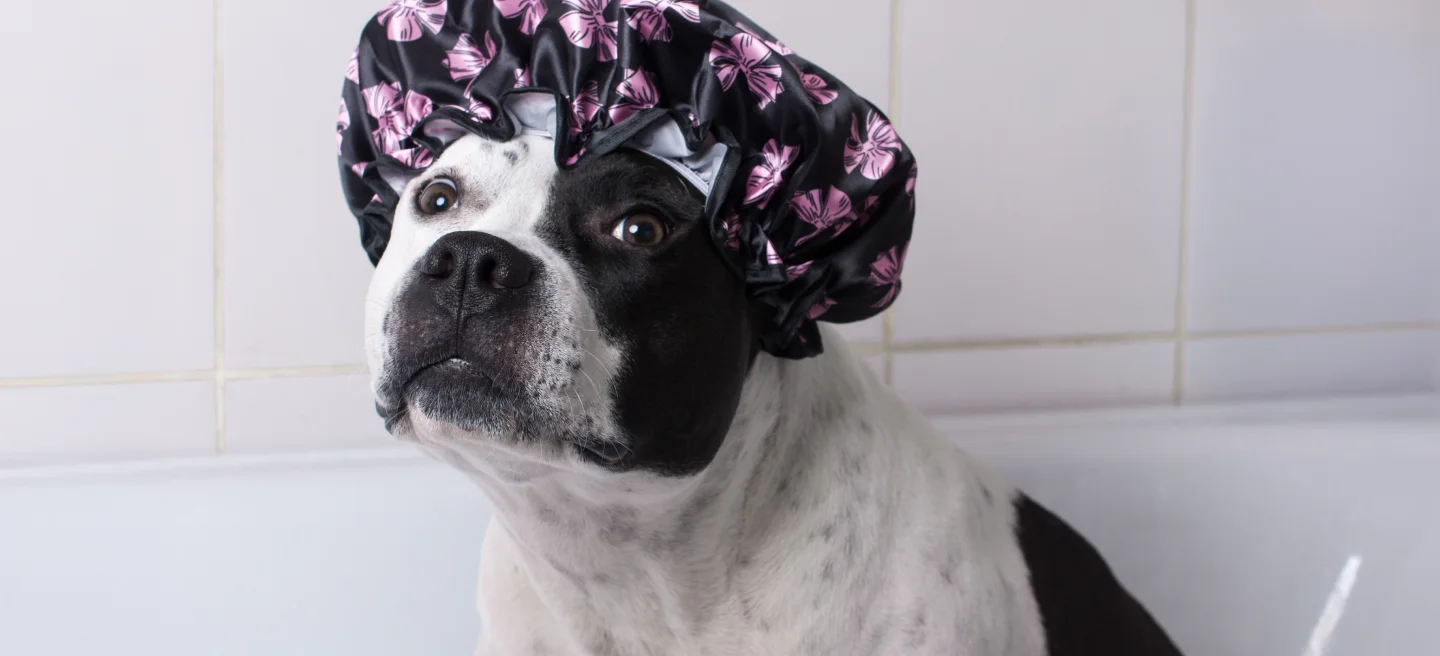
Living indoors with a dog is much easier when your furniture and clothes aren't covered in fur, and your floors aren't scratched up by doggy nails.
For those living with a fur-shedding dog breed, it can be a nightmare to have to lint-roll and vacuum every day to keep things fur-free.
The simple solution is to keep your dog's coat manageable so shedding is at a minimum. This might involve keeping their hair clipped short, which you either get a groomer to do, or it yourself with your own dog clippers.
Alternatively, regular brushing can help decrease shedding, as can the use of a furminator to decrease their bulky undercoat. Check out our guide to help you decide Which Dog Brush Do You Need?
Learning how to clip your dog's nails and keep them short with nail trimmers will make it easier to live in an apartment (particularly a rental) as it will prevent your dog from causing scratch marks and damage to hard floors.
Want to know more? Check out our guide to How to Stop Your Dog Shedding.
Feeding
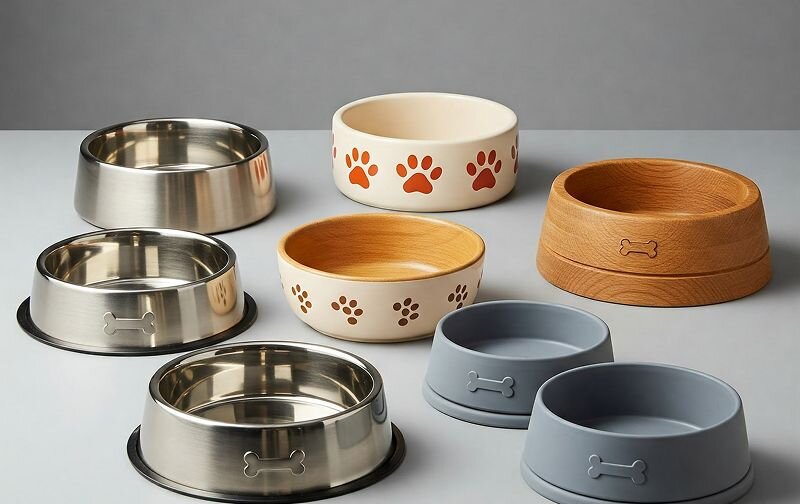
Make your dog's bowl a feature, rather than something to hide!
It's always important to provide fresh food and water to your dog, but bowls and feeding containers are often unsightly. And for the hygiene-minded apartment dweller, messy bowls can invoke thoughts of uncleanliness.
Why not indulge your pet with a fancy water fountain? Not only does a water fountain look great, but it can actually encourage your dog to drink more water and help keep them hydrated. This is particularly important in an apartment in summer, as small spaces can become stuffy when we aren't home. Water fountains also keep the water moving which prevents it from becoming stagnant.
An automatic food dispensing bowl is a good idea for owners with unpredictable schedules, and also for dogs who need a little control over their diet. Some even contain a built-in microphone so you can record a personalised message that plays at mealtime. This will help keep your pet stimulated while home alone in a small apartment.
Want to know more? Read more about Which Pet Food and Water Bowls Do I Need?
Ultimately, creating a harmonious life with a dog in an apartment boils down to thoughtful planning and consistent effort.
By implementing strategies for indoor toileting, proactive training to minimise barking, ensuring regular exercise and mental stimulation, maintaining a manageable grooming routine, and even making feeding solutions work for your space, you can successfully "dogify" your apartment and help your canine companion comfortably adapt to apartment living.
With these considerations in mind, both you and your furry friend can thrive in your smaller urban abode, proving that a compact living space doesn't have to compromise the joys of pet ownership.
Further Reading
Want to read more? Check out our other articles:
History
Our experts continually monitor the health and wellness space and we update our articles when new information becomes available.
Thu 14 Oct 2021
Written by Dr Carla Paszkowski BVSc (Hons)Dr Teagan Lever BVSc (Hons)
Head Veterinarian, BVSc (Hons)
Pet Circle's Head Veterinarian, Dr Teagan graduated from the University of Queensland in 2010 and went on to work in small animal and mixed practice in various locations around QLD & ACT before joining Pet Circle in early 2016. Dr Teagan has special interests in dermatology, nutrition and preventative health care. She feels privileged to witness the special bond people share with their pets on a daily basis and enjoys forming lasting relationships with pet parents and their fur children.

